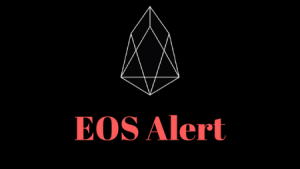Contents:


Each https://coinbreakingnews.info/ represented a necessary systemic upgrade of the network, at which point older versions become obsolete. Within the main phases, there have been many sub-upgrades to the network. This development was partly in response to Bitcoin’s shortcoming in the area of programmable apps. Initially, the plan was to build a layer on top of the Bitcoin network to enable smart contract functionality.

Coupled with news of crypto enthusiast Elon Musk’s takeover of Twitter, the token started a rally that culminated in a high of $1,652.38 on 29 October. By 2 November 2022, though, it had dropped back down to a low of $1,507.24. It hovered around this point for the next few weeks before a market upturn saw it worth about $1,325 as of the time of writing on 9 January 2023. As a result of the ensuing market turmoil, the token dropped more than 30% from a high of $1,574.80 on 8 November to a low of $1,083.29 the following day. By the afternoon of 10 November, though, it had recovered by more than 20% to $1,341.79.
Preparing for The Merge
Over the years, the ETH price has been on a volatile ride with multiple peaks and troughs. Most notably, ETH’s first major bull run came around the time when BTC hit a then-record high of about $20,000 in 2017. Therefore, any websites or social media accounts purporting to airdrop Ethereum tokens are most likely a scam.
- Before ETH2.0 is launched, it is possible for Ethereum holders to stake ETH on the test network.
- Founded in 2016, the DAO was a decentralized autonomous organization on the Ethereum blockchain.
- The existing Proof-of-Work consensus mechanism will be replaced by Proof-of-Stake .
- News concerning ETH2 updates had also positively affected the performance of the token’s price so far.
The update will remove customer data that is more than one year old, so that nodes no longer need to store old customer data. Data from smart contracts, protocols and wallet addresses with little interaction will be moved to another repository. The London upgrade included Ethereum Improvement Proposal (“EIP”) 1559, a mechanism for reducing transaction fee volatility. Ethereum 2.0 is a set of upgrades currently in progress on the Ethereum blockchain that would make the network more scalable, secure, and sustainable. These upgrades have actually been in development since 2014 and represent a major transition for the world’s second-most popular cryptocurrency. Let’s take a look at what Ethereum 2.0 is and when the updates may go live.
Ethereum Breaks $1,900 As Sharks Continue Accumulation
Ethereum’s flagship is its decentralized financial ecosystem, also known as DeFi. Unfortunately, at the moment a majority of DeFi is almost inoperable due to Ethereum’s network being too slow and overloaded. Reports have circulated that the development team is struggling to meet soft deadlines, as a result of building with legacy architecture in mind, but Schoedon paints a contrasting view.
- European authorities have been pushing to limit the use of PoW networks such as Bitcoin because of their high energy consumption and carbon emissions.
- ETH 2.0 will use sharding to ensure that Ethereum moves from 15 transactions per second to a potential 100,000 transactions per second.
- Apart from writing, he actively nurtures hobbies like sports and movies.
- The point is that there is going to be a lot of market dynamics going on and it’s going to create greed, fear and volatility in the markets at a greater level than we have seen in some time.
- Cheap gas is good for driving, not for investing in the oil industry,” Bitcoin Suisse said.
Election’s live results, the required specifications of ETH2 v1 and the Mainnet Deposit Contract Address for staking have been released. ETH2 users can now stake their ETH and become validators to help secure the network. The Ethereum network users will be happy because ETH will be changing its fee structure, and the users will be paying less for a transaction. Even second-generation cryptocurrencies like Ethereum suffer from limitations in their throughput and scalability. The Bitcoin network can currently only process seven transactions per second and guarantees only 4.6, while ETH can handle between 15-45, this is a roadblock if the usage exceeds this which it occasionally does.
Research & Markets
One potential unintended consequence might come in the form of eth 2.0 release date 2021 regulation. A case filed by the US Securities and Exchange Commission against crypto investment trader Ian Balina hinted that the SEC could well consider the coin to fall under its remit. The price of ETHinitially stagnated following 15 September’s change because, despite the hype around what some people called ‘Ethereum 2.0’, it was still the same old ether. This is a great article Michael, thanks for keeping us so well informed. Im still so frustrated with how un-user friendly the crypto space is. We are a decade + into crypto’s development and things are still so complicated.
But it will not be able to process transactions, execute smart contracts, or host dApps. But because demand is much higher than this, transaction fees end up going through the roof. Critics say this has priced consumers out of using this technology because DeFi transactions are prohibitively expensive and NFT minting costs are astronomical.

The “scourge” is a new phase announced by Vitalik on 5th November 2022. The purpose of this stage is to ensure reliable and credibly neutral transaction inclusion. Ethereum 2.0 setup and architectureCurrently, we are in Phase 1 of the roadmap the road towards Ethereum 2.0.
Because this actively increases the amount of decentralization in the network, the Ethereum Foundation believes this will ramp up security because it will make it much harder to attack the entire blockchain. This work was done by Gavin Wood, then the chief technology officer, in the Ethereum Yellow Paper that specified the Ethereum Virtual Machine. Subsequently, a Swiss non-profit foundation, the Ethereum Foundation , was founded. Development was funded by an online public crowd sale from July to August 2014, in which participants bought the Ethereum value token with another digital currency, bitcoin. While there was early praise for the technical innovations of Ethereum, questions were also raised about its security and scalability.
Trading
At the same time, the new system will keep the entire transactional history of the old Ethereum . As such, to join Ethereum’s proof of stake, a crypto enthusiast should stake at least 32 Ethers or almost $50,000 by press time. Two months before the mainnet release of Ethereum’s proof of stake, 13,125,461 Ethers are staked in its “deposit contract,” or over $20.6 billion. A big initiative of Ethereum 2.0 is to make the network more scalable so it can handle all of the activity on the network. Currently, Ethereum, like many other blockchain networks, is powered by nodes, which are any device connected to the blockchain — including servers, computers, and cellphones. Nodes are interconnected and are constantly exchanging data so the network stays up to date.
The Ethereum 2.0 upgrade will include and continue to rely on the accuracy of pre-upgrade transactions while adding and validating post-upgrade transactions using the new consensus model. PoS uses an economic incentive model to secure a network and verify transactions. In other words, PoS creates a financial motivation for people to take certain actions—a reward for validating legitimate transactions, or a fine for validating illegitimate transactions. Data privacy and security is a top priority for StealthEX, so all the swaps are non-custodial, and forever will be. If you want to participate in the future fate of the ETH project, you can buy Ethereum using the StealthEX service.
To fully understand Ethereum 2.0, we need to go back to 1 December 2020, when Ethereum released a new consensus layer called the Beacon Chain. According to its website, Beacon Chain was the name of the trial proof-of-stake blockchain that ran alongside the original proof-of-work blockchain to make sure everything was running smoothly. When The Merge took place, the PoW blockchain was turned off and the PoS mechanism became the main Ethereum blockchain. Before 15 September 2022, Ethereum used the proof-of-work consensus mechanism. The smart contract platform transitionedto a proof-of-stake chain in an upgrade known as The Merge or Ethereum 2.0 at around 7.45am BST (UTC+1) on 15 September. Rather, Ethereum and Ethereum 2.0 will be merged together into 2 layers of the same blockchain.

It also is expected to lower transaction costs and supply — and that is bullish for ether, its native token, some analysts believe. The London hard fork served as something of a trial run for the next phase of Ethereum 2.0, with Vitalik Buterin expressing confidence about what follows. Buterin told Bloomberg that the successful launch of the London hard fork proves the Ethereum ecosystem is “able to make significant changes,” and that it “definitely makes me more confident about the merge.”
Polygon (MATIC) Price Prediction 2025-2030: Here’s what will spur MATIC’s fortunes – AMBCrypto News
Polygon (MATIC) Price Prediction 2025-2030: Here’s what will spur MATIC’s fortunes.
Posted: Wed, 05 Apr 2023 12:55:17 GMT [source]
All validator node operators must upgrade to the latest software to continue earning rewards. However, miners and other service providers operating nodes strictly on Ethereum’s parallel PoW blockchain are not required to participate in this upgrade. Since launch, less than 1% of validators on the Beacon Chain have been slashed.
